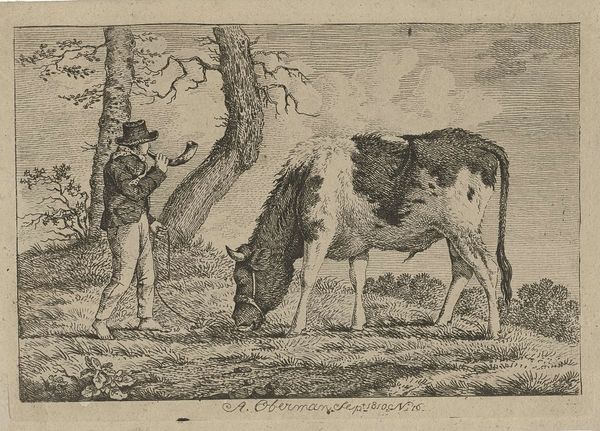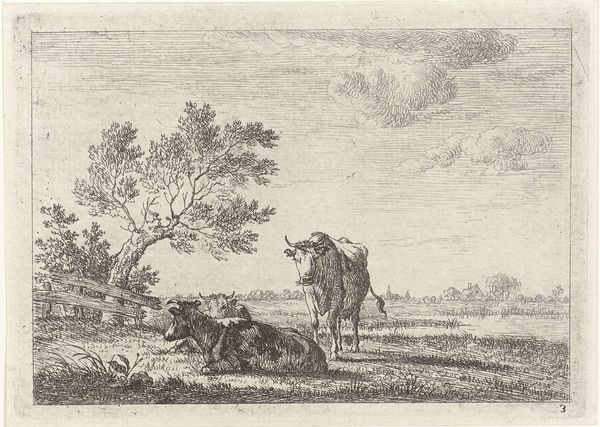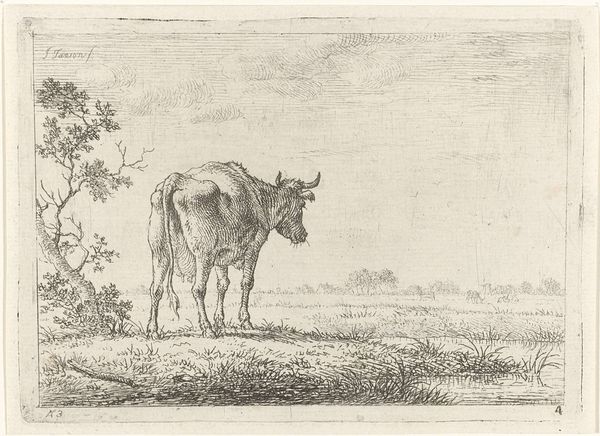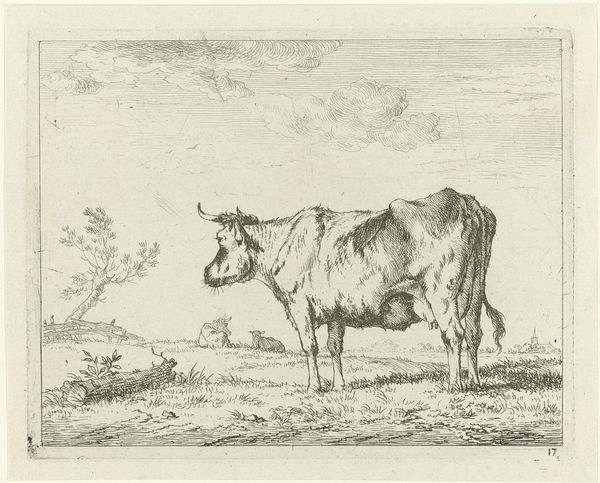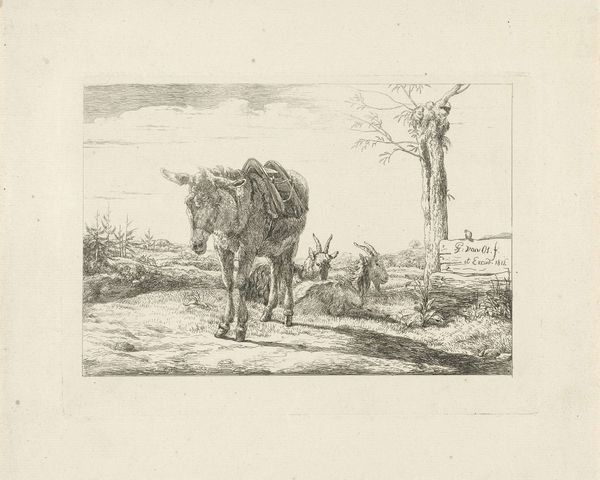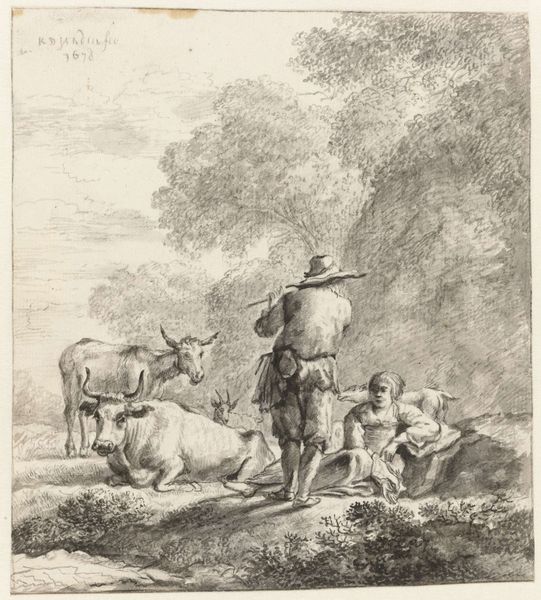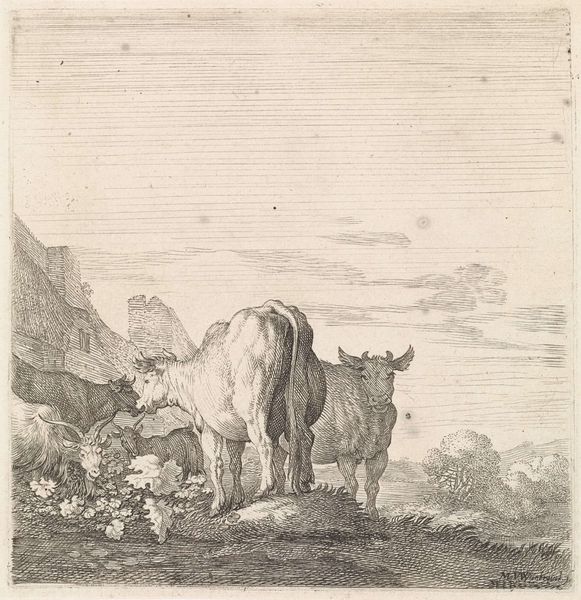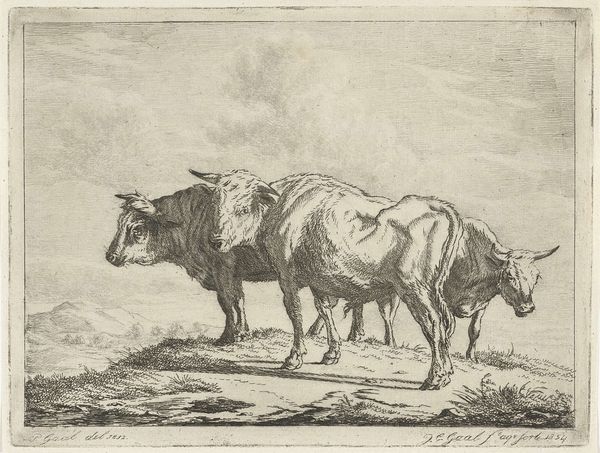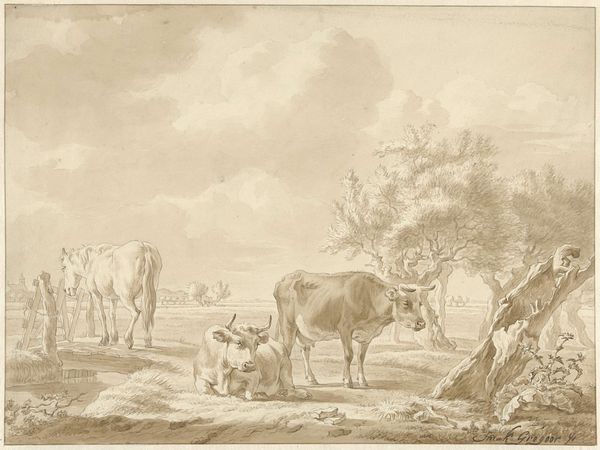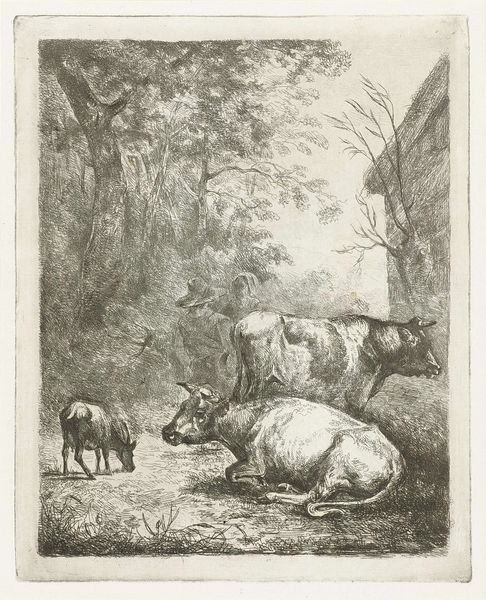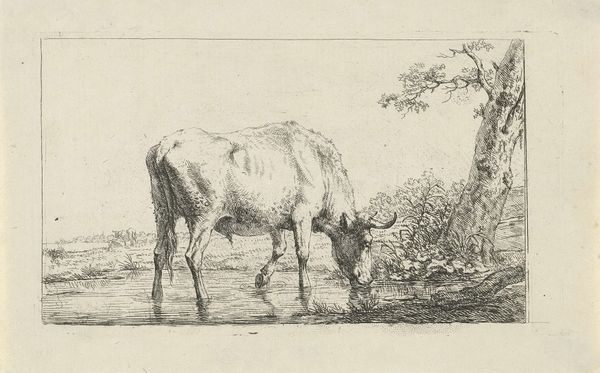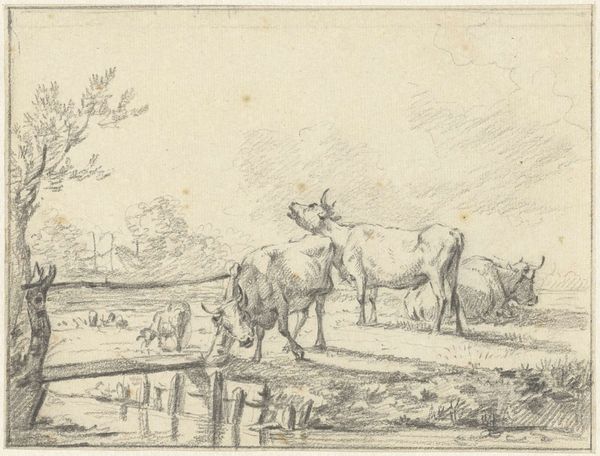
print, engraving
#
baroque
# print
#
landscape
#
form
#
pencil drawing
#
genre-painting
#
engraving
#
realism
Dimensions: height 203 mm, width 161 mm
Copyright: Rijks Museum: Open Domain
Curator: Isn't there a gorgeous quietness about this print? Editor: There is, isn't there? This engraving, dating from somewhere between 1643 and 1692, is called "Boy with Two Cows". It is held here in the Rijksmuseum, and is from an anonymous artist. The details, especially given it's a print, are incredible. Look at the detailing of the foliage, for example. Curator: It almost feels like stealing a glance into a world not meant for us, doesn't it? I mean, a simple scene, rendered with such tender care... It gives you that slightly bittersweet nostalgia for a simpler time. I imagine I'm the artist, stumbling across the boy and his cows resting, bathed in dappled sunlight, you know? Editor: And it's deceptively simple, right? Genre painting always seems like such a straightforward capturing of everyday life, but really, it’s reinforcing the status quo. I see a young laborer, literally dwarfed by these powerful symbols of wealth and sustenance— the cows. He’s connected to nature, sure, but also yoked to it. It's an image about ownership. Curator: Oh, I feel that, I feel that tension too! Maybe it’s just that the cows are massive. The way the reclining cow anchors the whole composition—it just emanates bovine energy, and they're looking so calm. But that just makes the boy look even younger, more vulnerable...it makes the piece feel protective. Editor: And protective *of what*, I wonder. Images like this naturalize rural hierarchies. The labor of the boy, the cows as property... it all reinforces power structures that are so often glossed over as quaint or charming. That's why these slices of "everyday life" are actually super politically charged. Curator: Gosh. You know, I always find it's fascinating to think of the life of an artwork past its initial creation. All of this encoded history still lingering on after it's completed. Editor: Precisely. By examining this "Boy with Two Cows," we see more than just cows and a child. We can look more deeply at class, labor, and the power dynamics of rural life in the Dutch Republic. It gives new meaning, I think. Curator: Exactly! We find so much more to learn beyond the canvas.
Comments
No comments
Be the first to comment and join the conversation on the ultimate creative platform.
